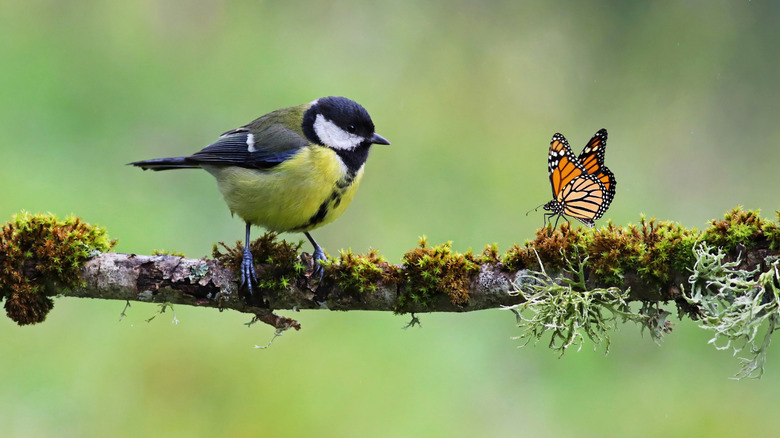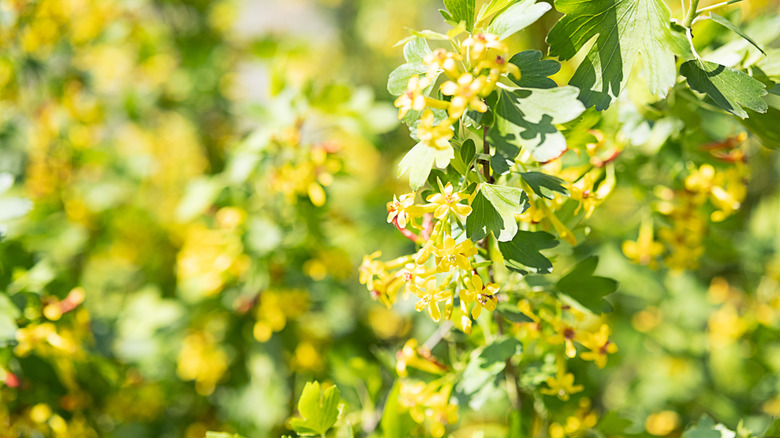The Stunning Privacy Shrub That'll Bring Butterflies And Birds To Your Small Yard
Having a small yard doesn't mean you don't have space to plant pollinating plants or privacy bushes. Not only is it possible to create a container garden with pollinator-attracting plants on a balcony when you're short on space, but you can also strategically plant shrubs to create privacy in your yard. This is all without sacrificing an aesthetic appeal. Whether you're wanting to start a pollinator garden, or if you want to grow privacy plants (or both!), consider planting clove currant (Ribes odoratum) for smaller outdoor spaces.
Also called buffalo or golden currants, clove currants are deciduous shrubs that are native to the central United States. As a pollinator-attracting plant, you'll feel good knowing that clove currant can help support birds and butterflies that may stop by your yard. In fact, clove currant is considered one of the spring blooming plants that can help you prepare for hummingbird season, thanks to their tubular flowers these birds love. Clove currant is also just one of the many types of plants to consider when looking to add privacy to your yard. While the plants may start out as small shrubs upon planting, clove currants can grow up between 6 and 12 feet tall. Furthermore, each plant can spread out between 6 and 8 feet, which can provide quite a barrier as a privacy hedge.
Planting clove currants for pollinators and backyard privacy
Clove currants may be good selections if you live within USDA hardiness zones 4 to 8. Keep in mind that the plants do best in full sun, as well as in well-draining soils. With that said, clove currants do not require a lot of care as they grow larger into privacy hedges or screens. They are considered drought-tolerant, although evenly moist soil will help the plant thrive best. Do not water the plants from above, as this may increase the risk of fungal diseases. Regular pruning during the late winter will help keep clove currant healthy and growing.
Once you've planted clove currants, you can experience their beautiful transitions throughout the year. First, the plants produce trumpet-shaped yellow flowers in the springtime, which can attract a variety of pollinating species to their nectar. During this time, you may also see small black fruits on the plant. You can also enjoy the beauty of clove currants during the autumn months when the plants' leaves turn purplish-red. As a final bonus, you may even be able to turn black fruit from your clove currants into homemade jam. Keep in mind that the result will be somewhat fruity with a woody taste compared with other types of currants.

